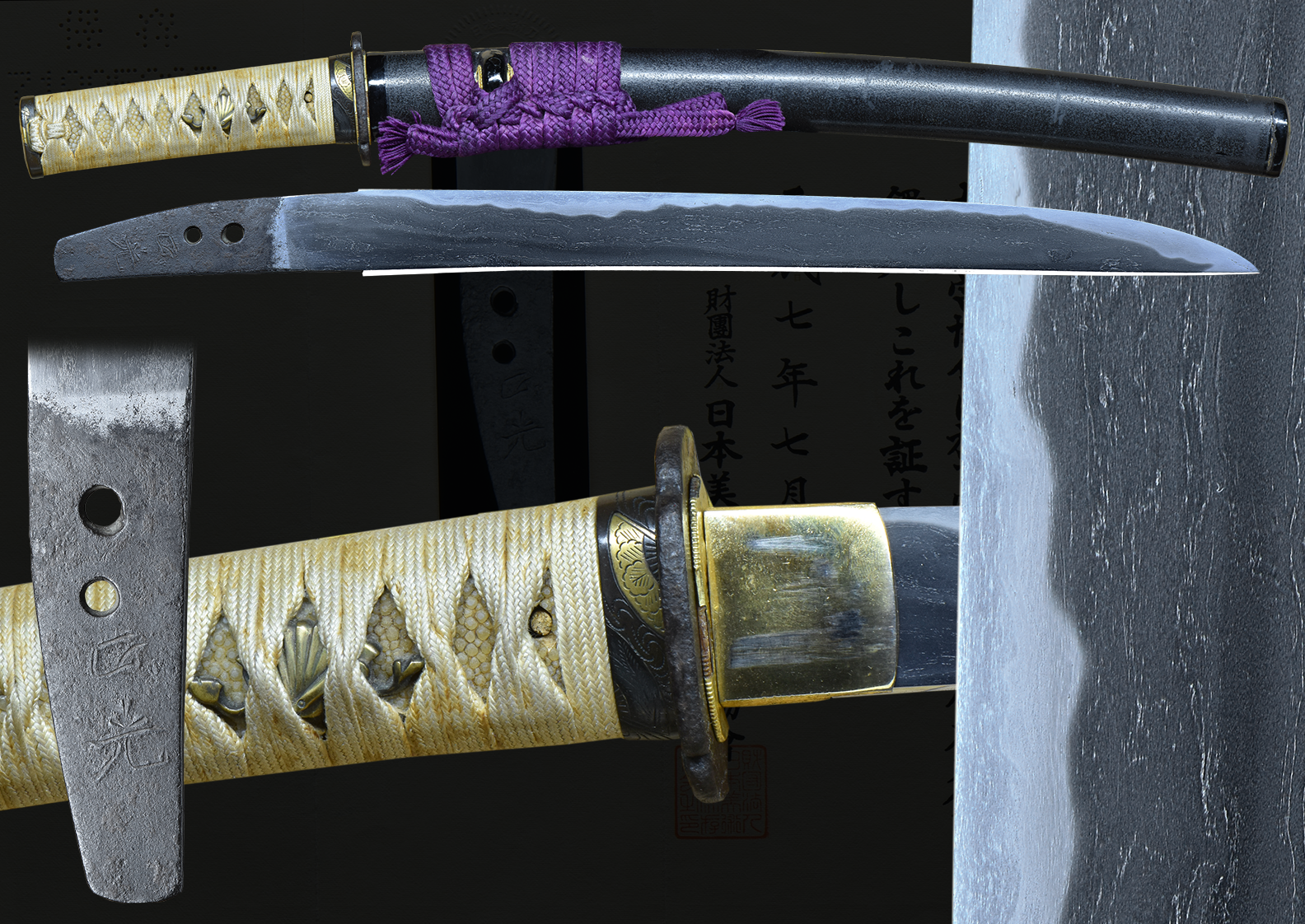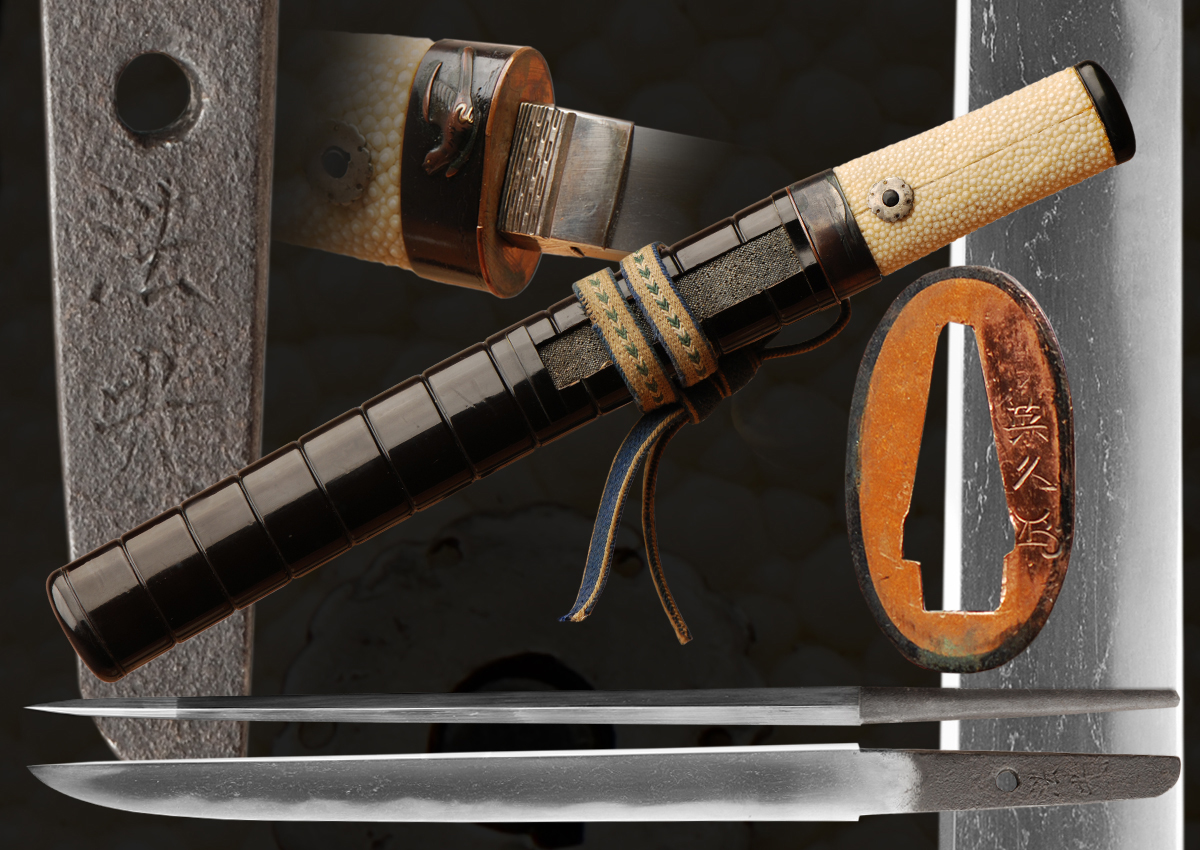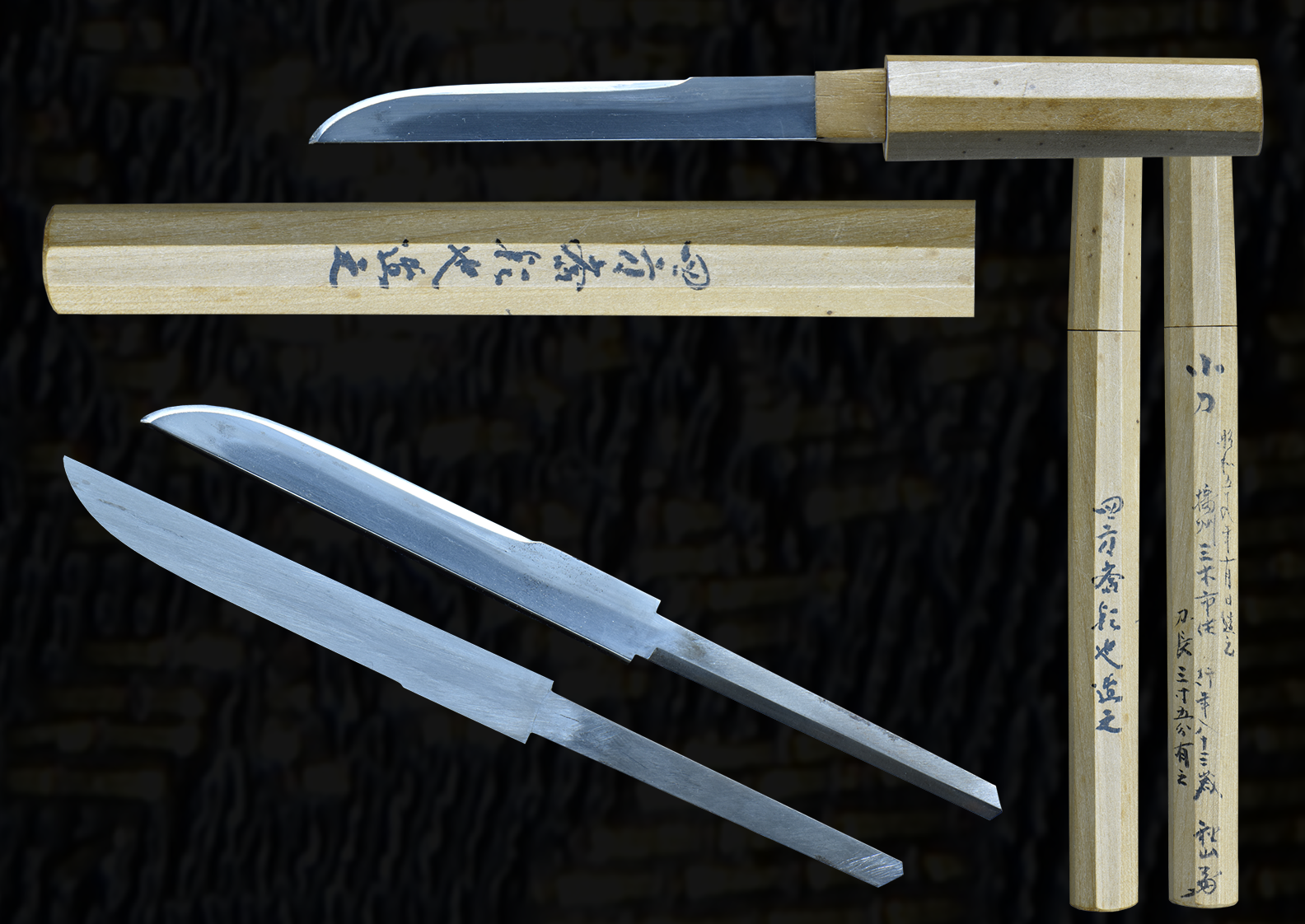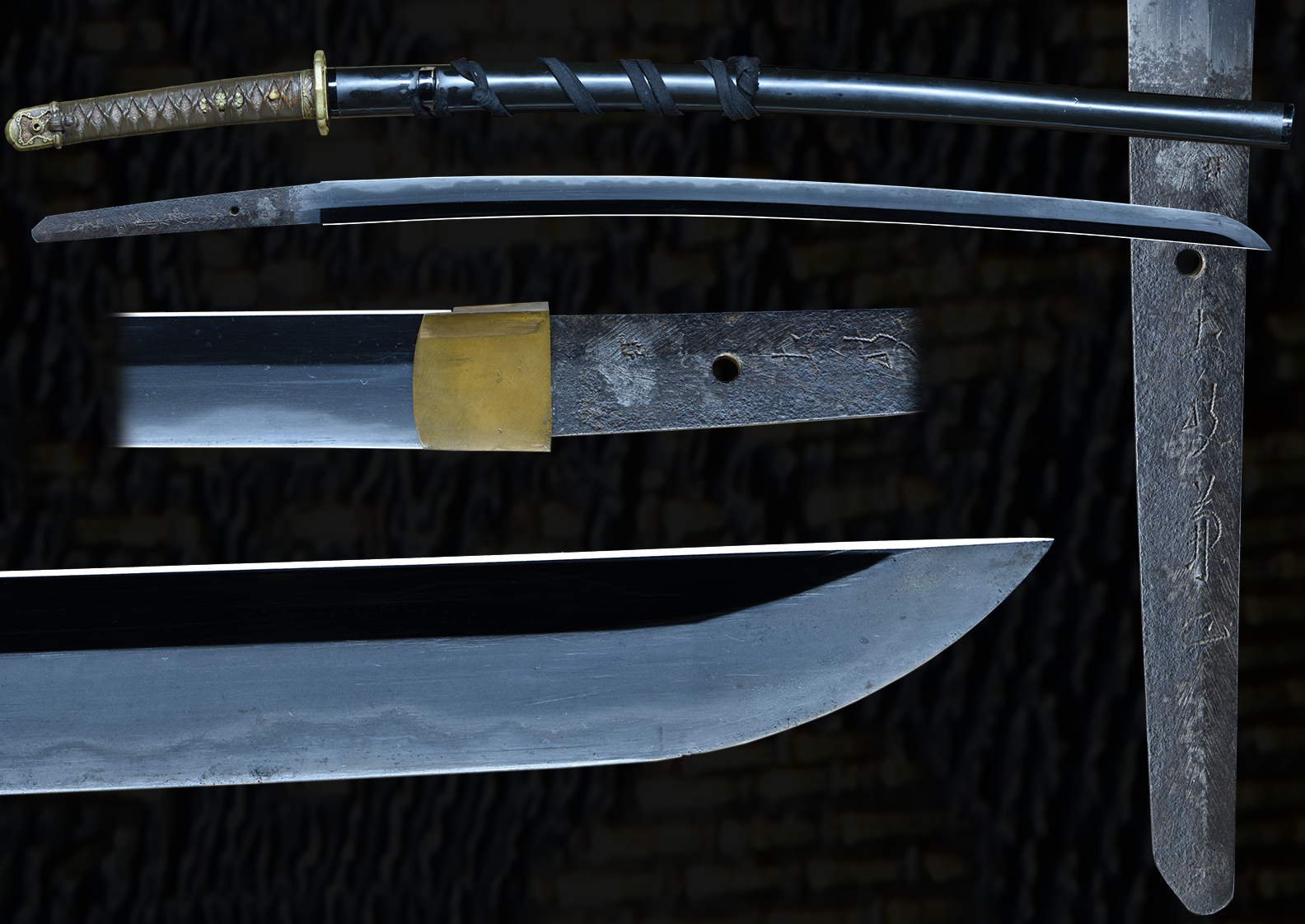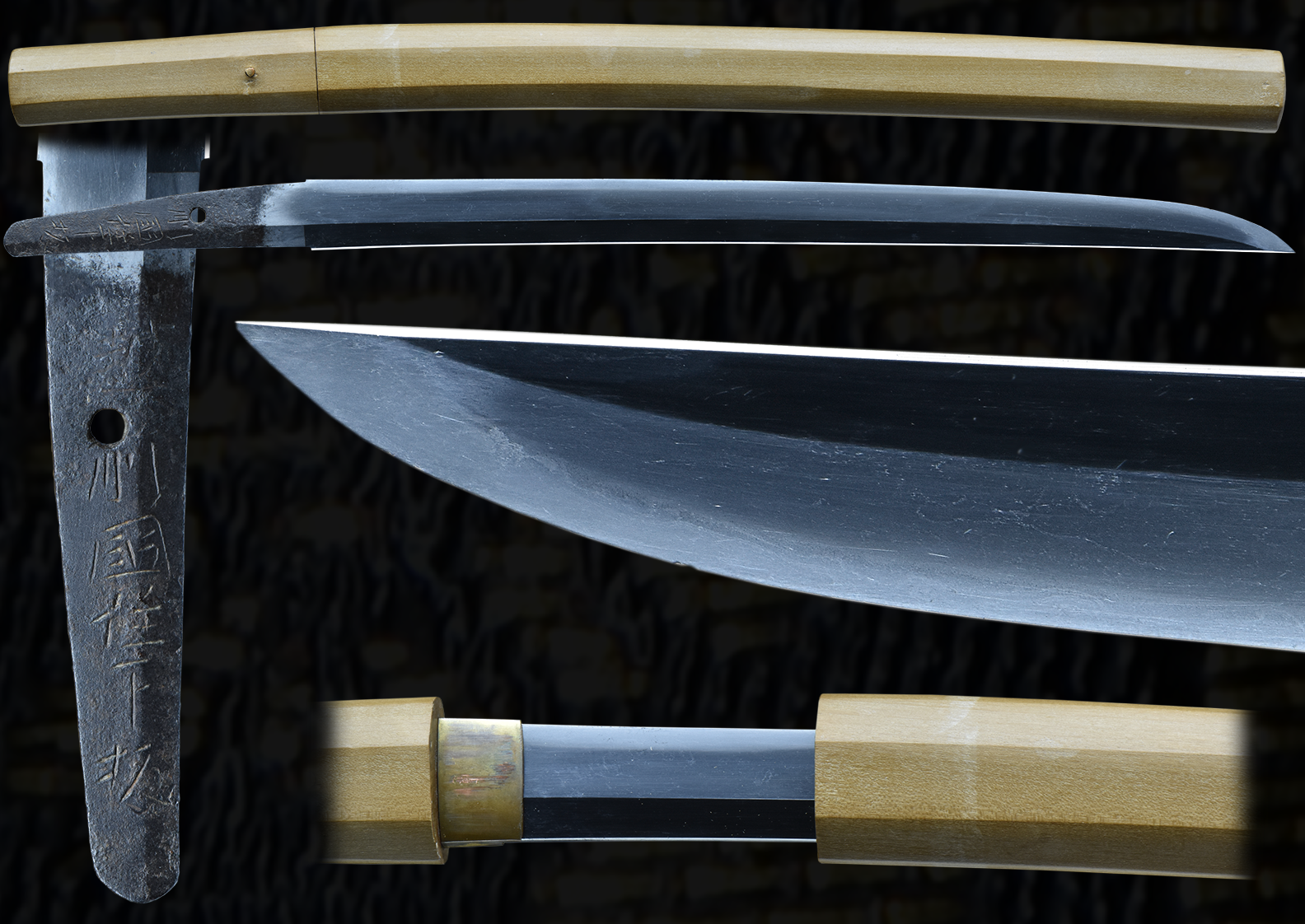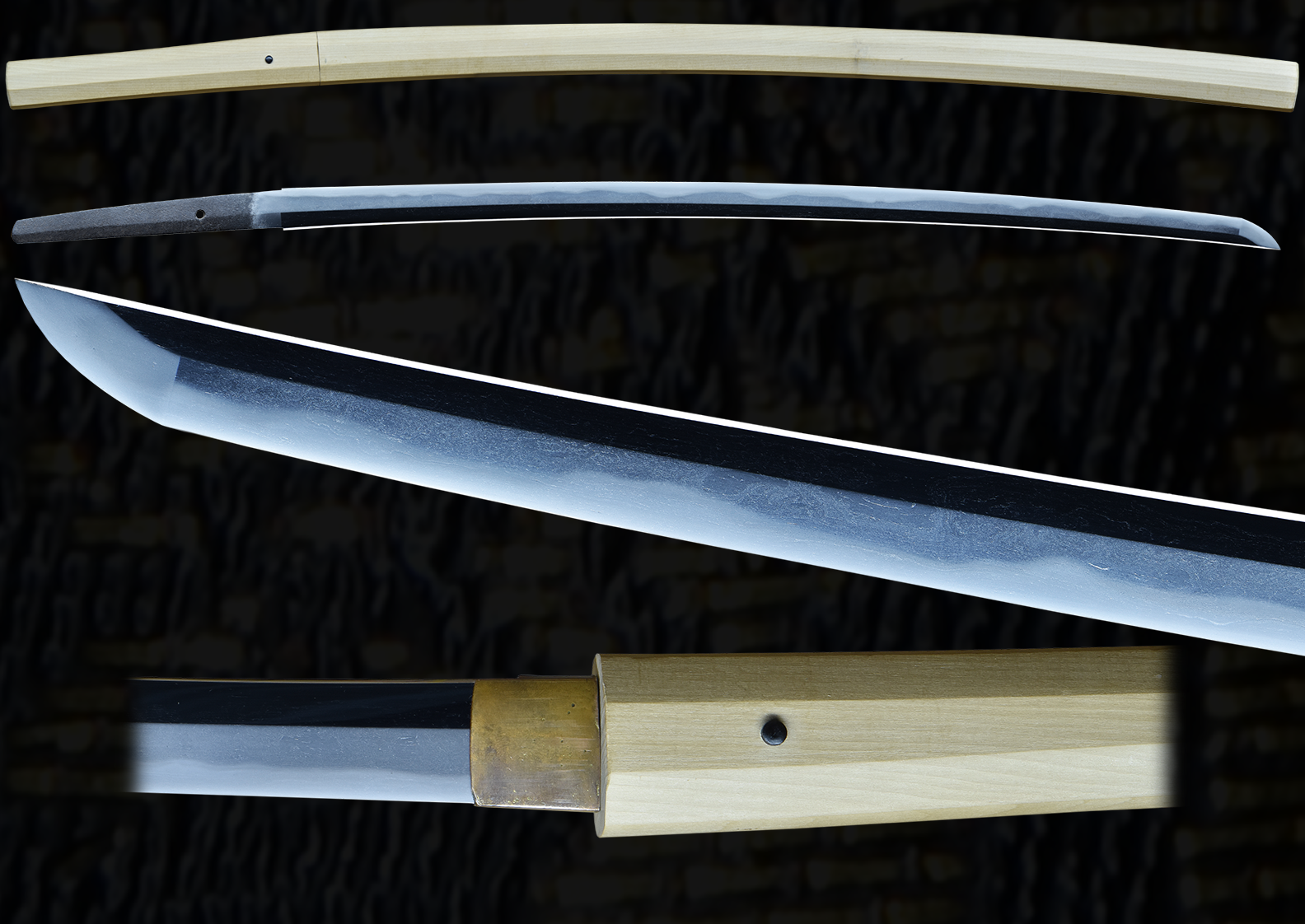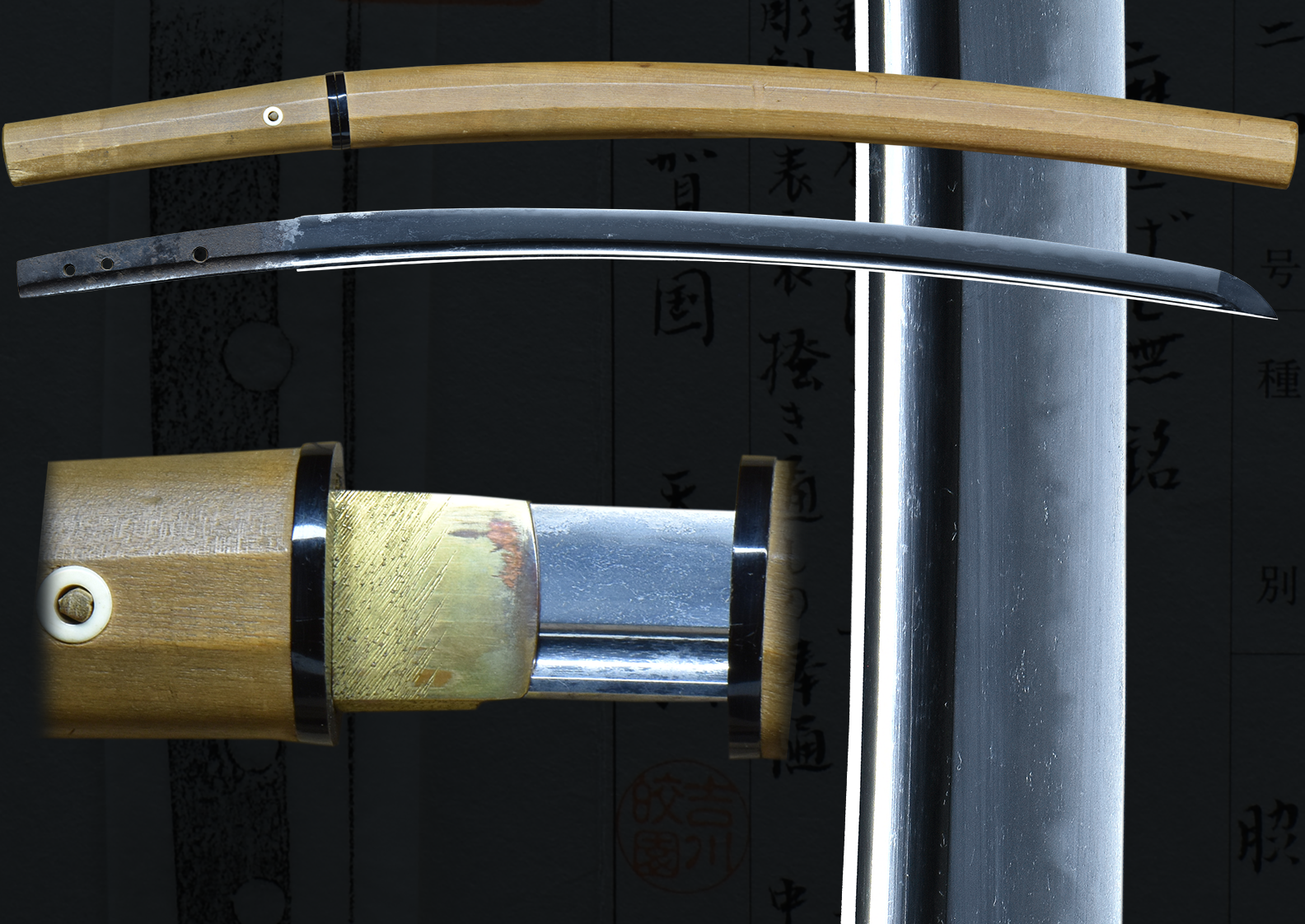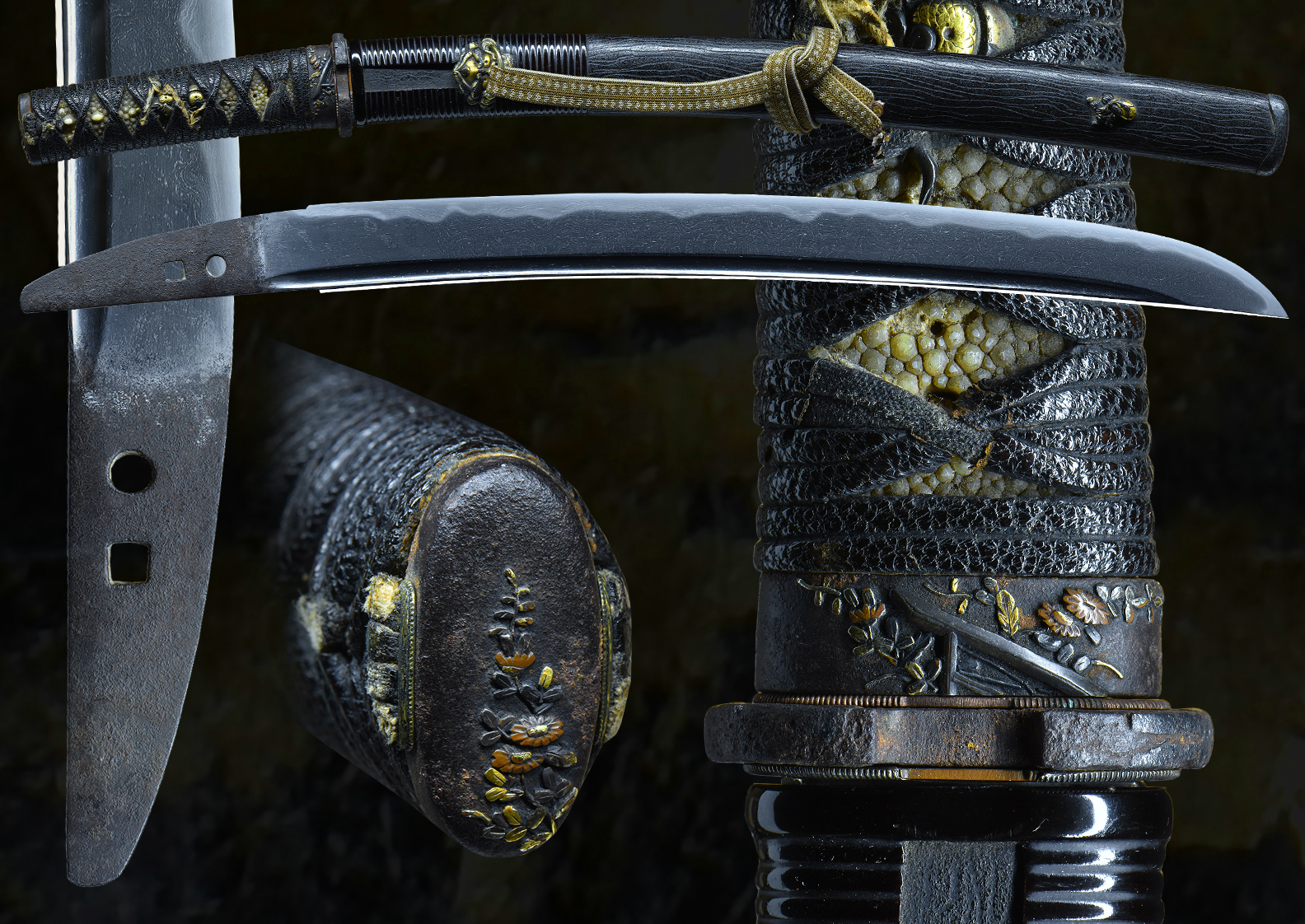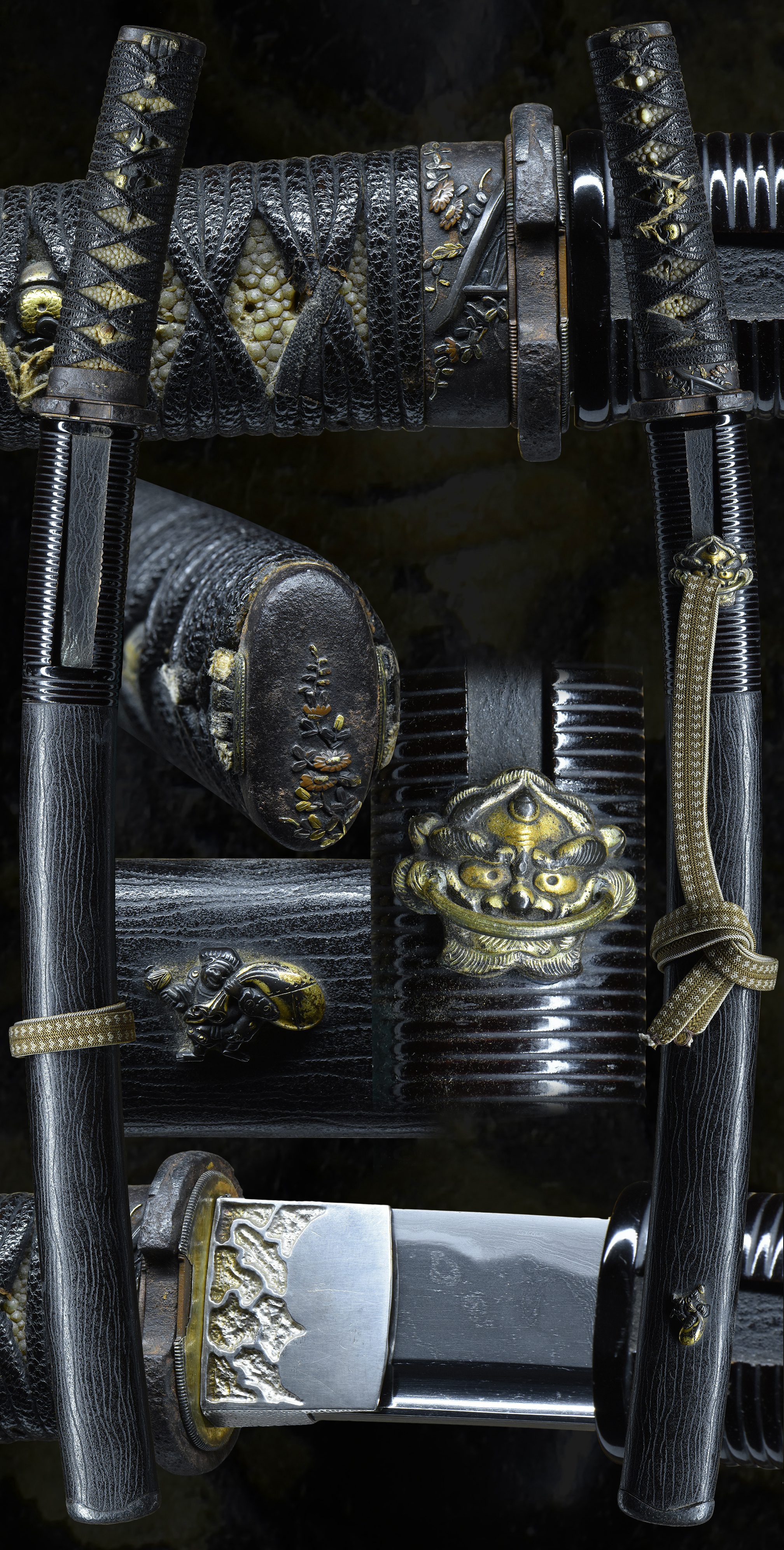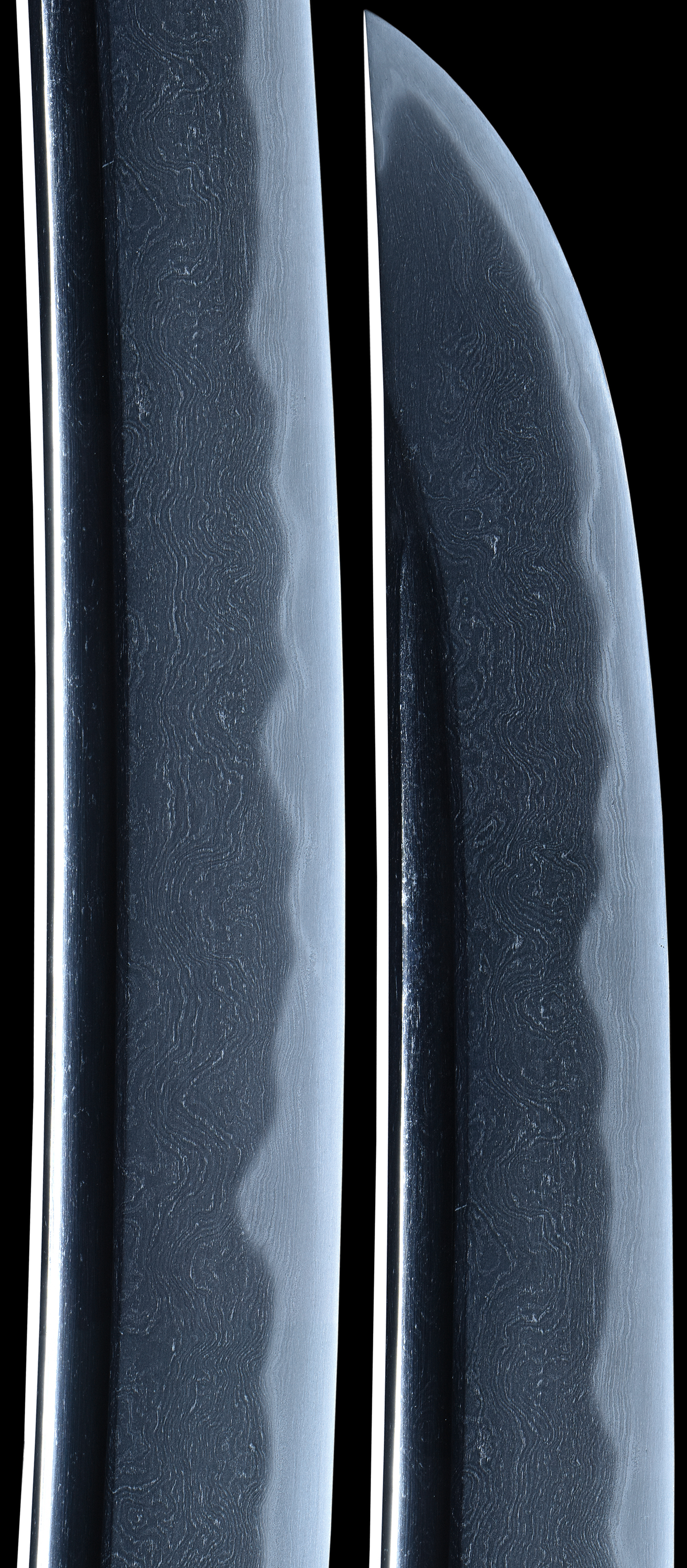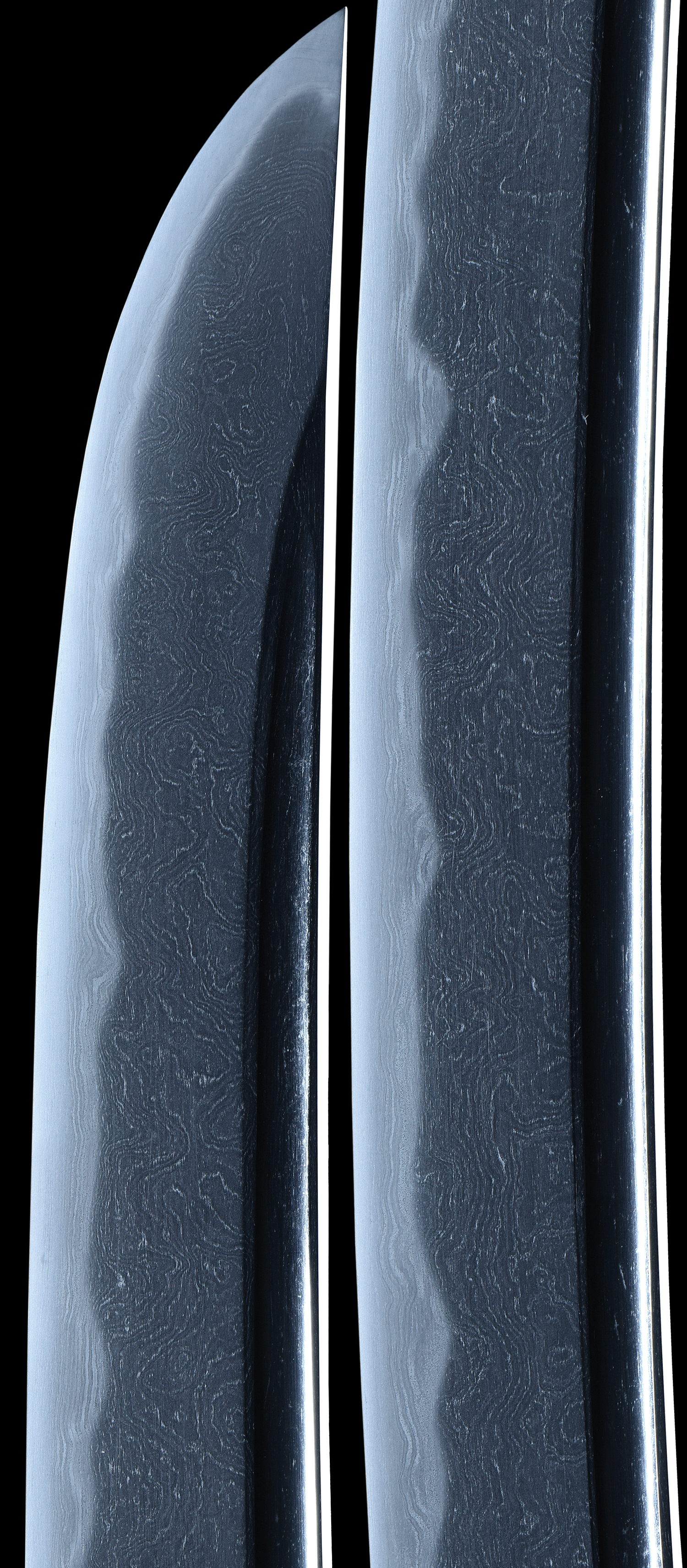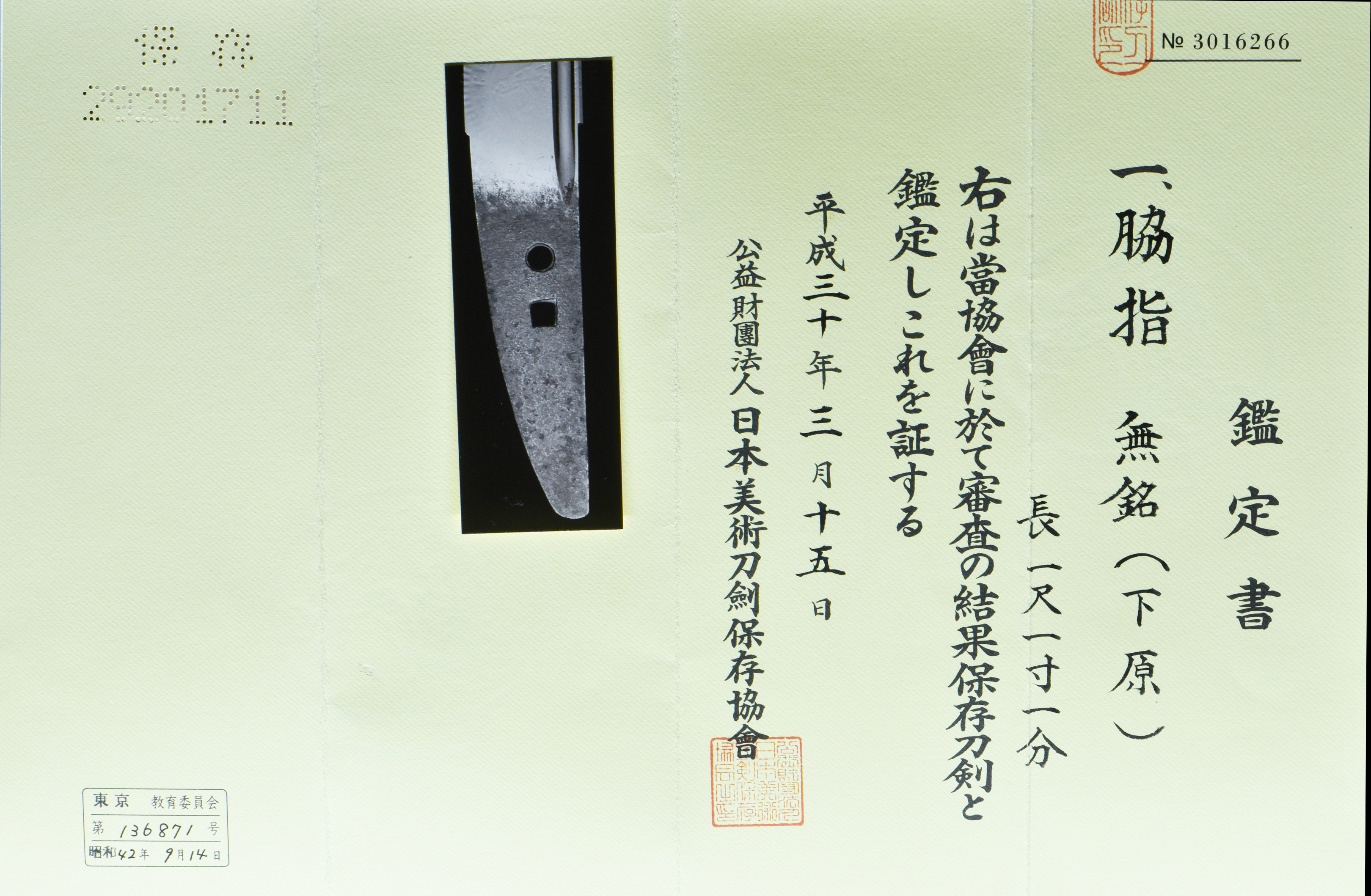This sword has been attributed to the Shitahara school by the NBTHK Shinsa. We believe this to be a late koto piece probably by the smith Chikashige. It has a very Soshu like feel and look to the blade. Some suggest there may have been a Soshu influence to the Shitahara school but that is in question. A very nice hira-zukuri style blade with a very bright hamon and intriguing hada.. There are many details which point this blade to this school, including the unique jihada which has a circular swirling pattern and is known as uzumaki-hada or shitahara hada. The dark jigane is also found in Shitahara blades and is a trait of this school. The Shitahara school is a well regarded school with great smiths. A rare longish Hirazukiri blade tanto in length this blade sports an attractive Bohi on both sides. Technically an O-tanto this blade feels and looks like a tanto. It is very light and well balanced. The hamon is full of hataraki such as sunagashi, kinsugi and more.The hamon is a gunome midare. The swirling mokume or Uzumaki-hada is a sight to see and appreciate. The tang is text book Shitahara and a solid kantei point, there is a square hole ALSO UNDER THE ROUND HOLE. A beautiful and unique rare blade by this school. The blade is in Koshirae and of nice quality all in black.. The tsuka is adorned with floral themed menuki as well as the Fuchi/kashira. The saya starts of in a ribbed style and then a wood grain texture to the rest in a black lacquer finish. The tsuka Ito is a black lacquered leatjher and very nice. The kurikata is an ONI and the saya sports a man with a bag applique. A wonderful package and a beautiful spectacular blade to view. The sunagashi is just a wonderful display. The sageo is tanto length and of gold design with white accents.
History on the Shitahara school:
Founded around the Eisho (1504) and Kyoroku (1528) eras in the later Muromachi period, a swordsmith named Tajima (no) Kami Chikashige from the Yamamoto clan, is credited with the foundation of the Shitahara school in what is now the Hajioji district of Metropolitan Tokyo. It is thought that he was employed by Oishi Sadahisa, a high ranking retainer of the Yamaouchi. Uesugi family. He later came under the patronage of Hojo Ujiteru who occupied Hachioji castle, this blade was attributed to the Chikashige den. When Hideyoshi ejected the Hojo from the Kanto area in 1590, the group of swordsmiths were relocated to Shitahara and when Tokugawa Ieyasu occupied Edo castle, they became direct retainers of the Tokugawa family and were permanently established there. They made blades for the battles of Sekigahara which took place in 1600 and the Osaka castle battles of 1614. During the Edo period, there were 10 branches of the Yamamoto clan and it has been estimated that there were approximately 165 swordsmiths from this extended family and some 5,000 blades extant in Japan today. Consequently, there are many Shitahara blades from the shinto period, often with picturesque hamon such as sanbon-sugi, sudare-ba and Fujiyama. They were also skilled carvers of horimono but very few swords were made from 1780 onwards. Both Chikashige and another named Chikahiro, studied swordmaking under Tsuguhiro, a Soshu smith from Kamakura and later under the shodai Masatoshi of Odawara. Not surprisingly,therefore, it is said that the Shitahara school was influenced by the Soshu school of Kamakura, the Sengo school of Ise (ubu nakago are often tanagobara-gata, similar to those of Muramasa) and both the Shimada and Odawara Soshu schools. Such Soshu-den influences may be seen in the present example by the comparatively large jihada as well.. However, the predominantly nioi based hamon shows only later affiliations and cast doubt over the claim of direct descent from Masamune, sometimes claimed for this school.The current sword gives the impression of being a koto blade when the nagasa, jihada and nakago are considered. This may indicate, that although only attributed to the school, that the smith Chikashige was the smith who forged this blade.
- Mei: Mumei
- Date: (1500’s-1600’s)
- Nagasa: 13-1/4 inches
- Sori: 9.0 mm
- Width at the ha-machi: 30.6 mm
- Thickness at the mune-machi: 6.0 mm
- Construction: Hirazukuri
- Mune: Iori
- Nakago: Ubu
- Kitae: mokume
- Hamon: Midare Gunome
- Boshi: Maru
- Condition: Good polish
(shipping and insurance included)
Email us if your interested in this item and remember to include the order number for this item: fss-873.
Click to Enlarge Image
Click to Enlarge Image
KANTEI-SHO (鑑定書) ‒ APPRAISAL
Wakizashi, unsigned: Shitahara (下原)
No 3016266
nagasa ~ 33.6 cm
According to the result of the shinsa committee of our society, we judge this work as authentic and rank it as Hozon Tōken.
March 15, 2018
[Foundation] Nihon Bijutsu Tōken Hozon Kyōkai, NBTHK (日本美術刀劍保存協會)
For Sale
